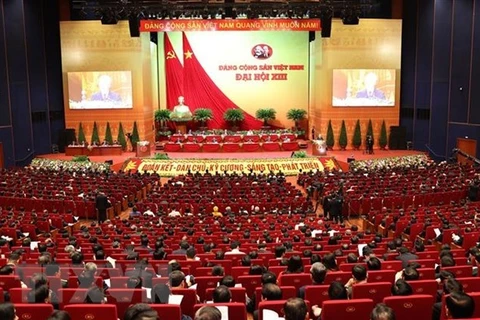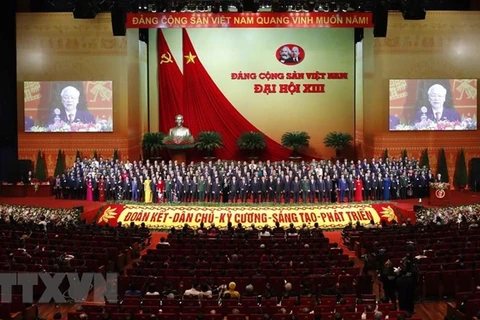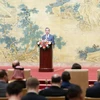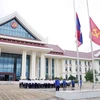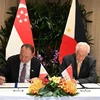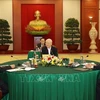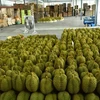Sydney (VNA) – Richard Maude, Senior Fellow at Australia’s Asia Society Policy Institute, has spoken highly of trade prospects of Southeast Asian nations against the backdrop of COVID-19.
In an article, he said that global trends in trade, foreign investment and production offer a mix of peril and opportunity for the Southeast Asian governments as they try to steer their damaged economies towards recovery.
“Beset by lockdowns, disrupted supply chains and travel restrictions, world trade volumes fell by historically steep levels in the first half of 2020. Southeast Asia was no exception – the region’s economies rely heavily on external demand and many play increasingly significant roles in East Asian supply chains,” he continued.
In the second quarter of 2020, for example, the value of goods exported from the ten members of the Association of Southeast Asian Nations (ASEAN) fell by 15 percent on a year-on-year basis and imports fell by 27 percent.
Foreign direct investment flows to Southeast Asia also declined sharply early in 2020.
The vertiginous plunge in world goods trade, at least, may now be bottoming out, but the International Monetary Fund (IMF) remains decidedly gloomy about prospects for a trade-led recovery in Asia.
Even so, amid all the uncertainty and downside risk, Southeast Asia may yet find itself better placed than other regions to trade itself out of trouble, the expert said, citing that East Asian economic regionalism will strengthen as one of the reasons.
Most major East Asian economies – China, Japan, the Republic of Korea and Taiwan – have managed to re-open their economies. China’s giant economy in particular is once again growing and helping keep Southeast Asian trade afloat.
Domestic consumption in Southeast Asia could double to 4 trillion USD over the next ten years.
Within the region, there are also signs the deep economic slump of the first half of 2020 is easing, at least in those parts of the region where the pandemic has been tamed. The decline in ASEAN global goods exports and imports, for example, slowed in the third quarter of 2020 on a quarter-on-quarter basis.
Vietnam, one of the best performing ASEAN economies, managed to eke out a small increase in economic growth in 2020, he cited.
Once it enters into force, the newly signed Regional Comprehensive Economic Partnership (RCEP) trade deal will give intra-Asian trading another boost. It is an incentive for large corporations to locate as much of their supply chains as possible within the bloc.
“ASEAN is also well placed to benefit from supply chain diversification within East Asia. Some manufacturing was already shifting to Southeast Asia before the pandemic.”
The pandemic has now reinforced interest from companies from around the world in regionalisation and supply chain diversification. Some governments, Japan, for example, is offering financial incentives to some of its companies to build production sites in Southeast Asia.
Like the rest of the world, the region faces headwinds and uncertainties, Maude noted, putting forth some suggestions for regional countries to use trade to help drive economic recovery./.
In an article, he said that global trends in trade, foreign investment and production offer a mix of peril and opportunity for the Southeast Asian governments as they try to steer their damaged economies towards recovery.
“Beset by lockdowns, disrupted supply chains and travel restrictions, world trade volumes fell by historically steep levels in the first half of 2020. Southeast Asia was no exception – the region’s economies rely heavily on external demand and many play increasingly significant roles in East Asian supply chains,” he continued.
In the second quarter of 2020, for example, the value of goods exported from the ten members of the Association of Southeast Asian Nations (ASEAN) fell by 15 percent on a year-on-year basis and imports fell by 27 percent.
Foreign direct investment flows to Southeast Asia also declined sharply early in 2020.
The vertiginous plunge in world goods trade, at least, may now be bottoming out, but the International Monetary Fund (IMF) remains decidedly gloomy about prospects for a trade-led recovery in Asia.
Even so, amid all the uncertainty and downside risk, Southeast Asia may yet find itself better placed than other regions to trade itself out of trouble, the expert said, citing that East Asian economic regionalism will strengthen as one of the reasons.
Most major East Asian economies – China, Japan, the Republic of Korea and Taiwan – have managed to re-open their economies. China’s giant economy in particular is once again growing and helping keep Southeast Asian trade afloat.
Domestic consumption in Southeast Asia could double to 4 trillion USD over the next ten years.
Within the region, there are also signs the deep economic slump of the first half of 2020 is easing, at least in those parts of the region where the pandemic has been tamed. The decline in ASEAN global goods exports and imports, for example, slowed in the third quarter of 2020 on a quarter-on-quarter basis.
Vietnam, one of the best performing ASEAN economies, managed to eke out a small increase in economic growth in 2020, he cited.
Once it enters into force, the newly signed Regional Comprehensive Economic Partnership (RCEP) trade deal will give intra-Asian trading another boost. It is an incentive for large corporations to locate as much of their supply chains as possible within the bloc.
“ASEAN is also well placed to benefit from supply chain diversification within East Asia. Some manufacturing was already shifting to Southeast Asia before the pandemic.”
The pandemic has now reinforced interest from companies from around the world in regionalisation and supply chain diversification. Some governments, Japan, for example, is offering financial incentives to some of its companies to build production sites in Southeast Asia.
Like the rest of the world, the region faces headwinds and uncertainties, Maude noted, putting forth some suggestions for regional countries to use trade to help drive economic recovery./.
VNA


